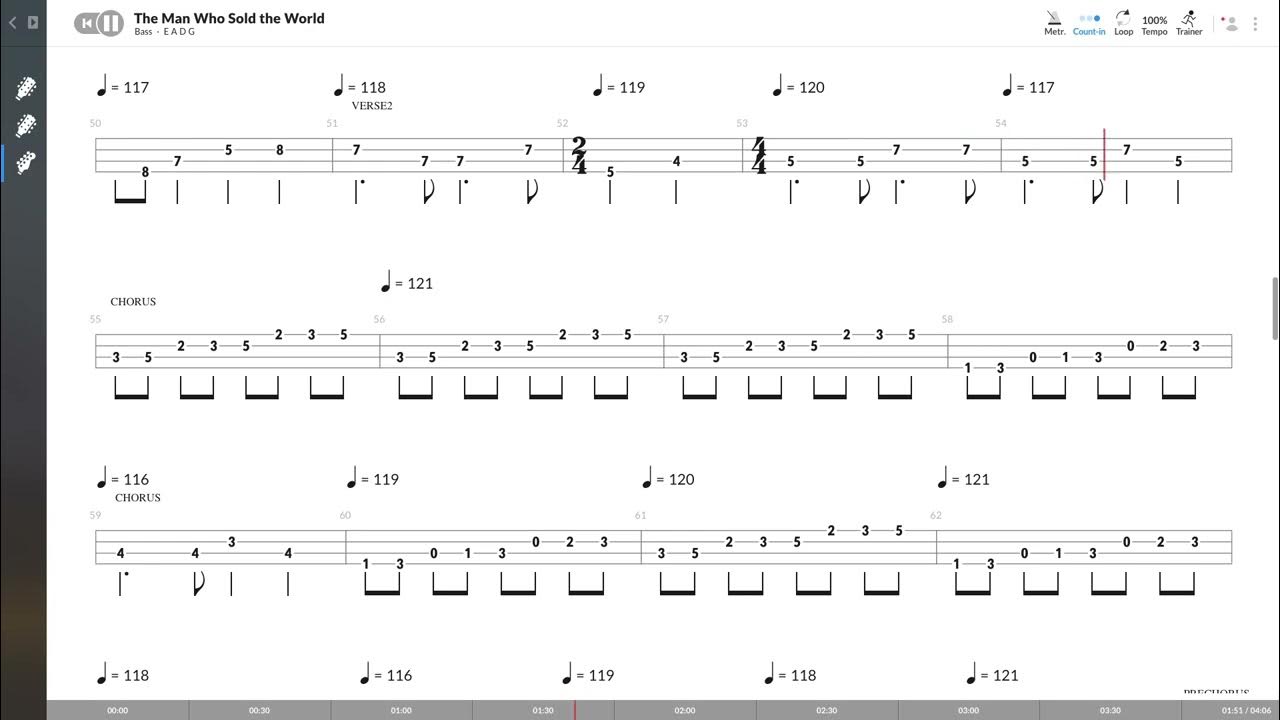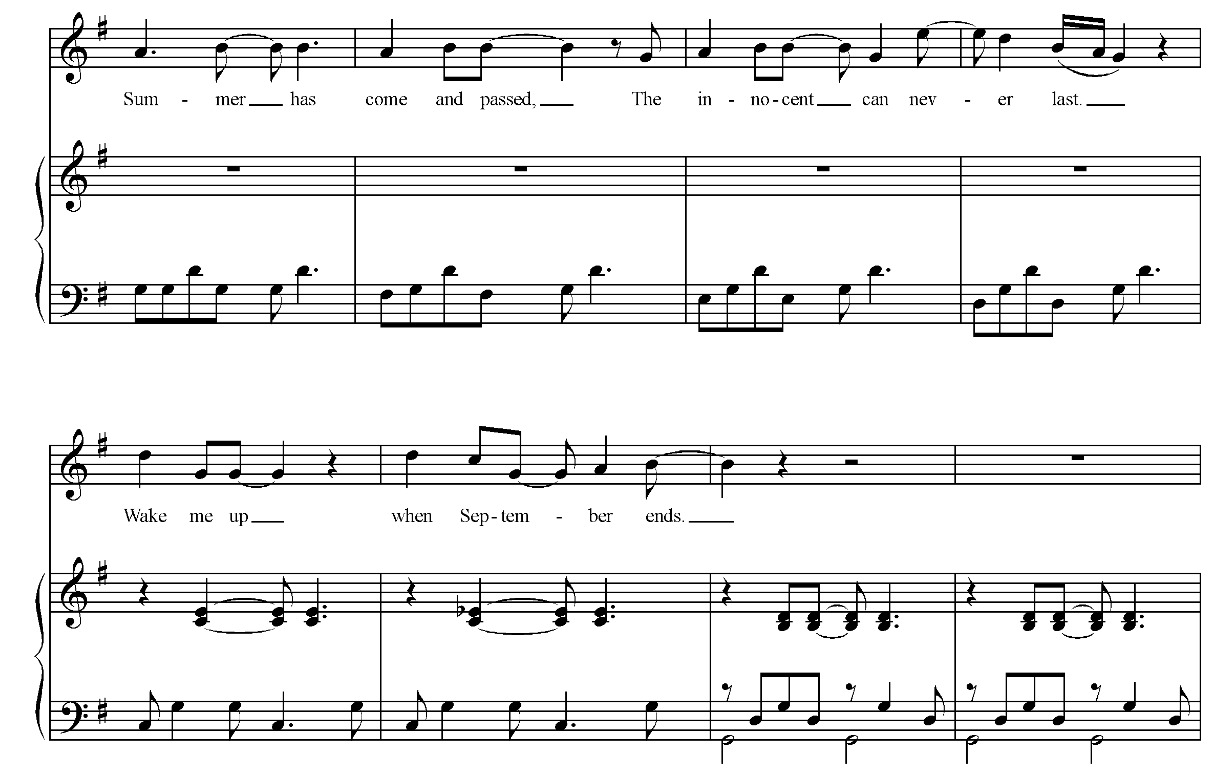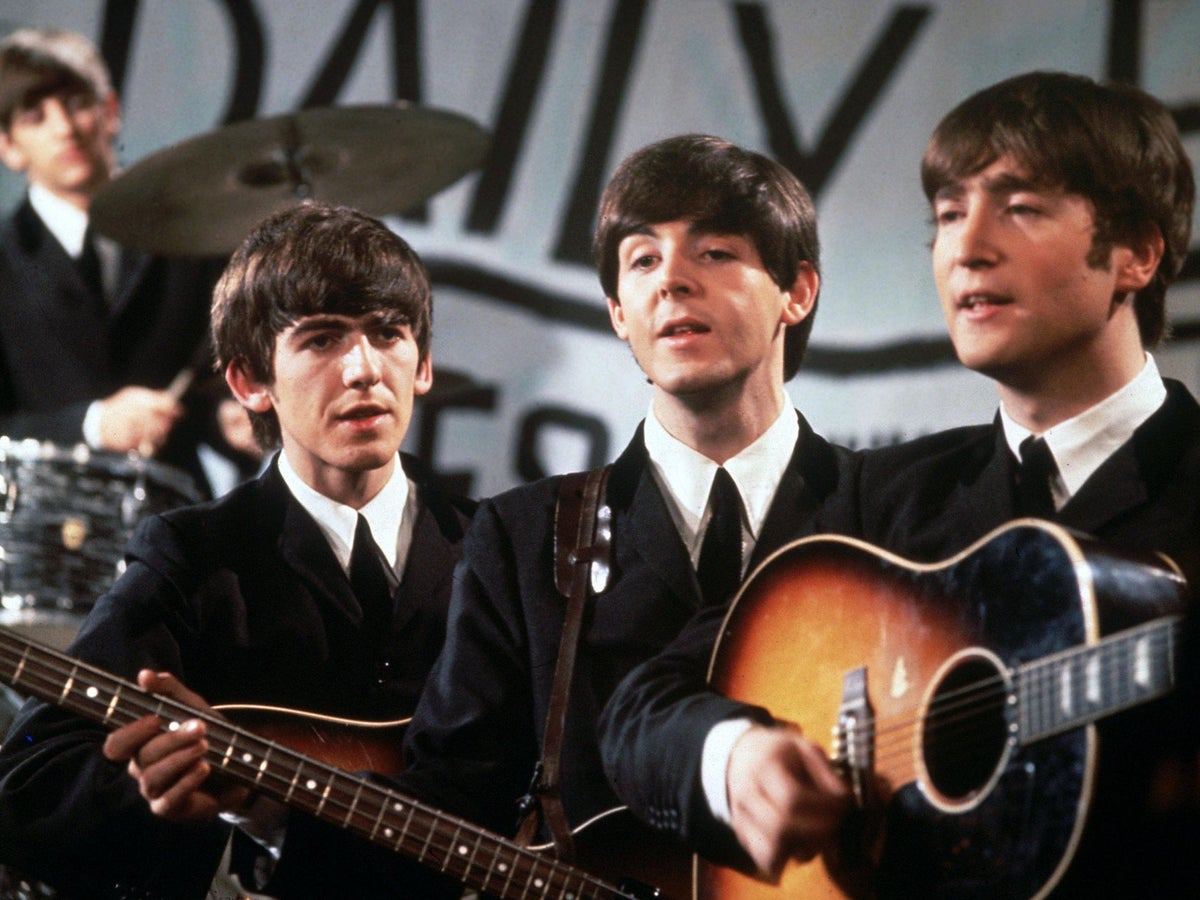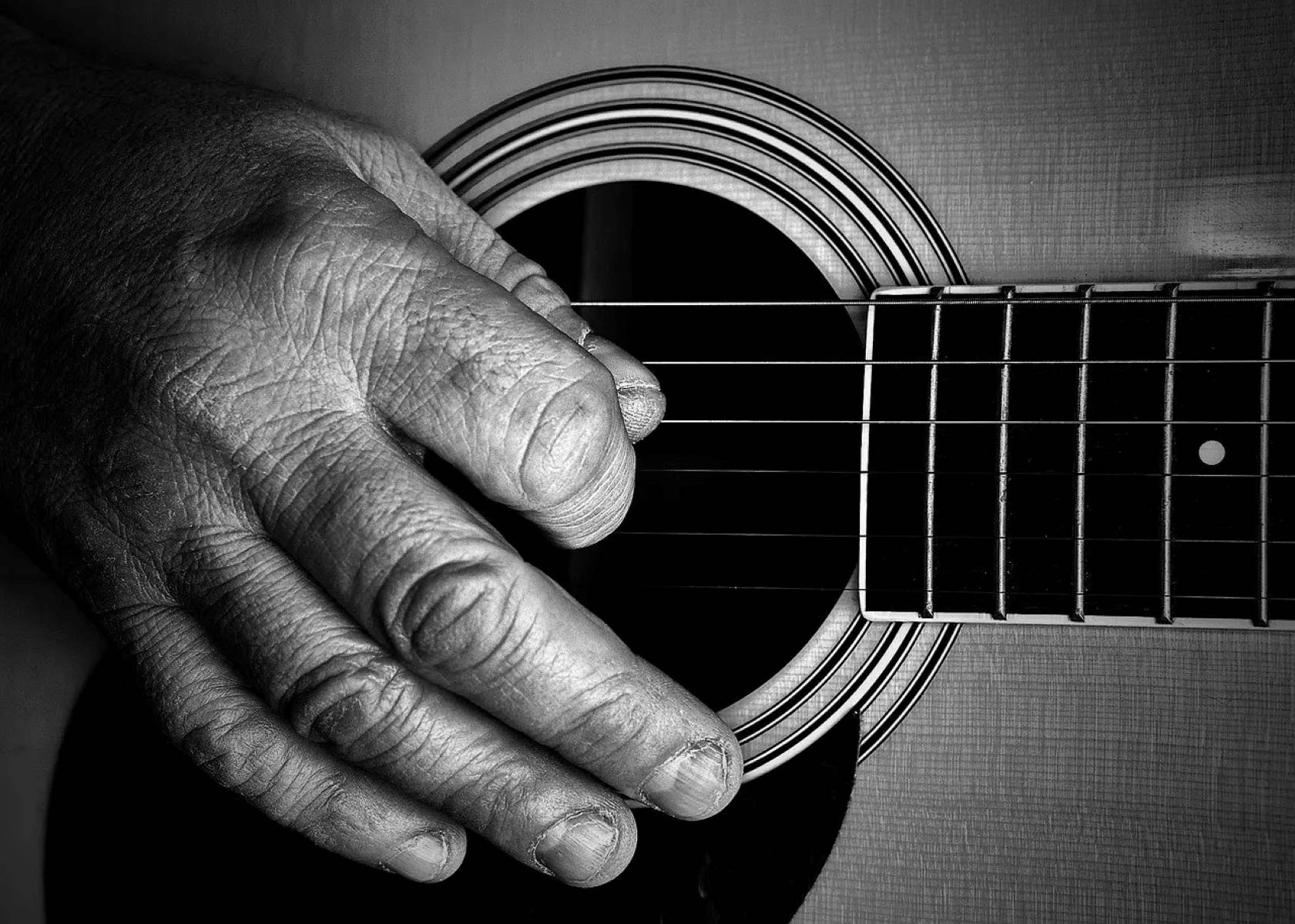Home>Instruments>Bass>Man Who Sold The World Bass Tab


Bass
Man Who Sold The World Bass Tab
Modified: January 22, 2024
Learn how to play the bass tab for "Man Who Sold The World" with our easy-to-follow tutorial. Master your bass skills and rock out to this classic hit.
(Many of the links in this article redirect to a specific reviewed product. Your purchase of these products through affiliate links helps to generate commission for AudioLover.com, at no extra cost. Learn more)
Table of Contents
Introduction
Welcome to this comprehensive bass tab and tutorial for the iconic song “Man Who Sold The World” by David Bowie. Released in 1970, this song has become a timeless classic, known for its haunting melody and thought-provoking lyrics. As a bassist, learning to play this song will not only expand your musical repertoire but also give you valuable insight into crafting memorable basslines.
In this article, we will break down the bassline for “Man Who Sold The World” and provide you with step-by-step instructions on how to play it. Whether you’re a beginner looking to improve your bass skills or an experienced player wanting to add another legendary bassline to your repertoire, this tutorial has you covered.
The bassline for “Man Who Sold The World” is played by the talented Tony Visconti, who was also the producer of the song. It serves as a foundational element of the track, providing a deep and melodic groove that perfectly complements Bowie’s vocals and the overall atmosphere of the song.
We will analyze each section of the song, including the verse, pre-chorus, chorus, bridge, and outro, along with any variations that occur throughout. Along the way, we’ll provide detailed explanations of the techniques used, such as slides, hammer-ons, and chord progressions, to help you understand the underlying theory behind the bassline.
Keep in mind that while we will provide a detailed transcription of the bassline in tab format, it’s important to listen to the original recording to capture the nuances and dynamics of the performance. This will allow you to add your own personality and interpretation to the bassline, just as Visconti did.
So, grab your bass, put on your favorite pair of headphones, and let’s dive into the mesmerizing bassline of “Man Who Sold The World” by David Bowie. Get ready to elevate your playing and experience the magic of this legendary song.
Bass Line Overview
The bassline for “Man Who Sold The World” is characterized by its simplicity yet captivating melody. It primarily revolves around a repeating four-note pattern that forms the foundation of the song. This pattern is played in a steady eighth-note rhythm, driving the song forward and creating a hypnotic groove.
The song is in the key of C minor, and the bassline is centered around the root note of the key, which is C. The bassline utilizes predominantly single notes, with occasional slides and octave jumps, adding a touch of variation and musicality.
The tone of the bass is crucial to achieving the desired sound for this song. Visconti used a Fender Precision Bass with flatwound strings to achieve a warm, rounded tone. You can experiment with different basses and settings to find the tone that best suits your style and equipment.
Throughout the song, the bassline interacts with the guitar chords and vocals, creating a harmonious blend that gives the song its distinctive character. It’s important to listen carefully to the original recording to understand how Visconti’s bassline interlocks with the other instruments and vocals.
As with any bassline, timing and groove are essential. Pay close attention to the rhythm and dynamics, ensuring that each note is played with precision and a touch of finesse. The bassline should be solid and steady, providing a solid foundation for the song without overpowering the other elements.
In the following sections, we’ll break down the bassline for each section of the song, providing both the tab notation and explanations of the techniques used. Take your time to practice each section individually, gradually building up to playing the entire song. Along the way, feel free to experiment and add your own flair to the bassline while staying true to the essence of the song.
Verse Section
The verse section of “Man Who Sold The World” introduces the main bassline that repeats throughout most of the song. This section sets the tone and establishes the hypnotic groove that draws listeners in.
The bassline for the verse is based on a simple four-note pattern that repeats multiple times. The notes played are C, G, A#, and G, outlining the chord progression of C minor. The pattern is played in a repeating eighth-note rhythm, providing a steady and driving pulse to the song.
To capture the essence of the bassline, start by placing your index finger on the 3rd fret of the A string, playing the note C. Then, use your ring finger to reach the 5th fret of the D string for the note G. Next, slide your ring finger up to the 6th fret for the note A#. Finally, move your ring finger back to the 5th fret for the second G note.
Practice playing this pattern slowly at first, ensuring each note is clear and well-defined. Focus on maintaining a consistent rhythm and groove as you repeat the pattern. Once you feel comfortable, gradually speed up the tempo until you can play it smoothly and effortlessly.
It’s important to note that while the bassline remains relatively constant throughout the verse section, there are slight variations and fills that add flavor and musicality. These variations can include slides, hammer-ons, or rhythmic variations. Listen closely to the original recording to capture these nuances and incorporate them into your own playing.
As you master the verse section, try playing along with the song to get a feel for how the bassline interacts with the vocals and guitar parts. Pay attention to the dynamics and how the bassline supports and enhances the overall musicality of the verse section.
Congratulations! You’ve now learned the bassline for the verse section of “Man Who Sold The World.” Take your time to practice and perfect this section before moving on to the other sections of the song. Remember to maintain a steady rhythm, capture the nuances of the original recording, and enjoy the process of bringing this iconic bassline to life.
Pre-Chorus Section
The pre-chorus section of “Man Who Sold the World” builds upon the foundation established in the verse section and adds a touch of anticipation and intensity. It serves as a transition between the verse and chorus, preparing the listener for the explosive chorus that follows.
The bassline for the pre-chorus continues to revolve around the same four-note pattern as the verse, but with slight variations and fills to create tension and build momentum. The chords in this section are Bb, F, and G, which provide a contrast to the C minor chords in the verse.
To play the bassline for the pre-chorus, you’ll use the same finger positions as in the verse section. Start by playing the notes Bb, F, and G, following the rhythm of the song. The pattern repeats several times, allowing you to lock into the groove and build up the energy leading into the chorus.
As you play the pre-chorus, pay attention to the dynamics and accents. The bassline should rise in intensity gradually, preparing the listener for the explosive chorus. Use slides, hammer-ons, and variations in your attack to add texture and expressiveness to the bassline.
It’s important to listen to the original recording to capture the subtle nuances in Bowie’s vocal delivery and the guitar parts in this section. The bassline should complement and support these elements, enhancing the overall impact of the pre-chorus.
As with any section of the song, take your time to practice the pre-chorus section gradually. Start by playing it slowly, focusing on accuracy and timing. Once you feel comfortable, gradually increase the speed until you can play it smoothly and seamlessly.
By mastering the pre-chorus section, you’ll be able to seamlessly transition between the verse and chorus, creating a captivating musical journey for the listener. Embrace the energy and anticipation in this section, and let your bassline drive the song forward towards the explosive chorus.
Congratulations on learning the bassline for the pre-chorus section of “Man Who Sold the World”! With each section you master, you’ll be gaining a deeper understanding of the song and honing your bass playing skills. Keep up the practice and get ready to tackle the thrilling chorus section next!
Chorus Section
The chorus section of “Man Who Sold the World” is where the song reaches its climax and showcases the power and emotion of the bassline. This section provides a melodic and memorable hook that lingers in the minds of listeners long after the song ends.
The bassline for the chorus builds upon the foundation established in the previous sections. It introduces a subtle variation of the four-note pattern, adding an extra note to create a sense of resolution and release. The chords in this section are C minor, Bb, and Ab, giving the chorus a distinct and impactful sound.
To play the bassline for the chorus, start with the same finger positions as in the verse and pre-chorus sections. Begin by playing the notes C, G, A#, and G, just like in the previous sections. However, when you reach the second G note, slide down to the 3rd fret of the E string for the note Ab, before resolving back to the C note on the 3rd fret of the A string.
The chorus section is where the bassline truly shines. It’s important to play with confidence and emphasize the changes in chord progression. Focus on accentuating the low end and delivering a solid foundation for the guitar and vocals to soar above.
As with previous sections, listen closely to the original recording to capture the nuances and dynamics of the bassline. Pay attention to how Tony Visconti’s bassline interacts with Bowie’s vocals and the guitar parts in the chorus. Let these elements guide your interpretation and bring your own musicality to the performance.
Practice the chorus section repeatedly, ensuring that each note is clear and well-defined. Pay attention to the rhythm, timing, and dynamics, aiming to deliver a tight and powerful performance. As you become comfortable with the section, feel free to experiment with variations and embellishments, adding your own touch to the bassline.
Congratulations on mastering the chorus section of “Man Who Sold the World”! This section is the heart of the song, and your bassline will play a crucial role in driving the emotional impact of the chorus. With each section you learn, you’ll be one step closer to embodying the essence of this iconic song.
Now that you have conquered the chorus section, let’s move on to the next part and continue unraveling the captivating bassline of “Man Who Sold the World.”
Bridge Section
The bridge section of “Man Who Sold the World” adds a new dimension to the song, introducing a contrasting and introspective mood. The bassline in this section deviates from the repeating four-note pattern, showcasing Visconti’s musical prowess and his ability to create unique and captivating basslines.
The bassline for the bridge builds upon the harmonic structure established in the previous sections. It incorporates melodic movement and a series of descending notes to create a sense of depth and introspection. The chords in this section include Bb, Ab, G, and F, providing a harmonic journey that adds emotional tension.
To play the bassline for the bridge, take note of the descending pattern. Start by playing the note Bb on the 6th fret of the E string. Then, move down to the note Ab on the 4th fret of the E string. From there, slide down to the note G on the 3rd fret of the E string, before finally reaching the note F on the 1st fret of the E string.
The bridge section is where you have an opportunity to showcase your musicality and interpretation. Focus on creating a smooth and expressive transition between the notes, paying attention to the timing and dynamics. Experiment with slides, vibrato, and other techniques to add depth and emotion to your playing.
As with the other sections of the song, it’s important to listen closely to the original recording to capture the subtle nuances in the bassline. Notice how Visconti’s bassline complements the lyrical narrative and adds a touch of melancholy to the overall mood of the bridge.
Practice the bridge section diligently, taking the time to internalize the descending pattern and create a seamless flow of notes. Experiment with different phrasing and variations to make the section your own, while staying true to the essence of the song.
Congratulations on mastering the bridge section of “Man Who Sold the World”! This section showcases the versatility of the bassline and your ability to adapt to different musical contexts. With each section you learn, you’re one step closer to fully understanding and embodying the timeless beauty of this iconic song.
Now, let’s move forward and explore the final section of the bassline in “Man Who Sold the World.”
Outro Section
The outro section of “Man Who Sold the World” serves as a reflective and contemplative closing to the song. It allows the bassline to take center stage, creating a lingering and haunting melody that leaves a lasting impression on the listener.
In the outro section, the bassline maintains a steady groove, providing a foundation for the final moments of the song. The chords for this section are C minor and Bb, creating a sense of resolution and closure. It’s important to maintain a consistent rhythm and dynamics as you play, allowing the bassline to drive the song forward while adding a touch of emotion.
To play the bassline for the outro, you’ll utilize the same four-note pattern as in the previous sections. Starting from the C note on the 3rd fret of the A string, continue playing the G, A#, and G notes. This repetition of the pattern adds a hypnotic quality to the outro, creating a sense of finality.
As you play the outro section, focus on delivering a powerful and steady performance. Pay attention to the dynamics and subtle variations, allowing the bassline to ebb and flow in intensity. It’s crucial to listen to the original recording and capture Visconti’s finesse and control in playing the outro section.
Use this section as an opportunity to express your interpretation and emotions through your playing. Experiment with different techniques such as slides, hammer-ons, and vibrato to add depth and texture to the bassline. Allow your personal touch to shine through while maintaining the integrity of the song.
Congratulations on reaching the outro section of “Man Who Sold the World”! You have now learned and mastered each section of the bassline, showcasing your skills as a bassist. Take the time to practice and refine the outro section, ensuring that every note is infused with emotion and intention.
As you continue to play and study this iconic bassline, remember to embrace the essence of the song and let your interpretation shine. Enjoy the process of bringing this timeless masterpiece to life through your bass playing.
Conclusion
Congratulations! You have now learned and mastered the mesmerizing bassline of “Man Who Sold the World” by David Bowie. By dissecting each section of the song, you have gained valuable insight into crafting memorable basslines and expanding your musical repertoire.
Throughout this tutorial, we explored the verse, pre-chorus, chorus, bridge, and outro sections, unraveling the nuances and techniques that make this bassline so captivating. From the repeating four-note pattern to the subtle variations and fills, you have discovered the secrets behind Tony Visconti’s bassline and its integral role in the song’s overall impact.
Remember, playing the bassline is not just about replicating the notes and rhythm; it’s about capturing the emotion and spirit of the song. Listen to the original recording, study Visconti’s finesse, and find ways to bring your own musicality and interpretation to the bassline.
As you continue your bass journey, take what you have learned from this tutorial and apply it to other songs in your repertoire. Use the techniques, dynamics, and musicality you have honed while learning “Man Who Sold the World” to enhance your overall playing and bring new life to your basslines.
Remember, mastering any song takes time and practice. Take it step by step, section by section, and gradually build up your skills. Be patient with yourself and enjoy the process of learning and growing as a bassist.
We hope this tutorial has provided you with a comprehensive understanding of the bassline in “Man Who Sold the World.” May it inspire you to explore new musical horizons, experiment with different techniques, and create your own unforgettable basslines.
Now, go forth and make some beautiful music with your bass! Keep practicing, keep pushing yourself, and always let the music guide you on your bass-playing journey. Rock on!
Further Resources
If you’re looking to expand your bass knowledge and continue your musical journey, here are some additional resources that can help you:
- Bass tutorial videos: Platforms like YouTube offer a wide range of bass tutorial videos where you can learn from experienced bassists. Search for tutorials specifically for “Man Who Sold the World” or explore other songs and techniques to enhance your skills.
- Bass forums and communities: Connect with other bass players online through forums and communities. You can ask questions, explore new techniques, and exchange tips with fellow musicians. Participating in discussions can provide valuable insights and foster a sense of community.
- Bass lessons and courses: Consider taking formal bass lessons or enrolling in online courses. Working with a qualified instructor can provide personalized guidance and help you progress at a faster rate. Look for instructors who specialize in rock or Bowie’s music for a focused learning experience.
- Sheet music and bass tab websites: Browse websites that offer sheet music and bass tabs for a wide range of songs. This can be a great resource to expand your repertoire and learn new basslines. Look for reputable websites that provide accurate and well-structured transcriptions.
- Music theory books: Dive deeper into the world of music theory to enhance your understanding and musicality. Books focusing on bass theory and techniques can provide valuable insights and improve your overall bass playing skills.
Remember to always practice consistently and maintain a growth mindset. Learning the bass is a lifelong journey, and the more time and effort you invest, the more progress you will see. Enjoy the process, embrace challenges, and keep pushing yourself to new levels of musicality.
We hope these resources help you continue to expand your bass knowledge and inspire you to discover new songs and techniques. Keep exploring, keep learning, and continue to make beautiful music with your bass!











